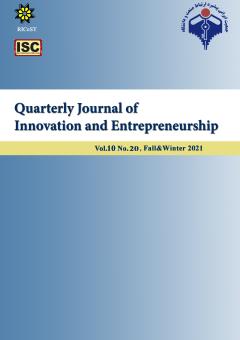-
-
List of Articles
-
Open Access Article
1 - Identifying the factors affecting the formation of free innovation process in Iran Using fuzzy Delphi approach and Dematel technique
ali asghar sadabadi mohammad sadegh khayyatian fatemeh mohammadi -
Open Access Article
2 - Entrepreneurial marketing: A New Theory of Effective University-Industry Cooperation
Seyed Maseood Ghoreishi mahdi majidpour Babak Negahdari Morteza Mousakhani -
Open Access Article
3 - Developing a model for the growth stages of knowledge-based companies
Ghasem Ramezanpour Nargesi Negin Fallah Haghighi Zeinab Sharifi -
Open Access Article
4 - Structural Model Of Mediating role of Organizational Commitment in the Relationship between Organizational Agility and Organizational Intelligence with Organizational Performance
Shiva Habibzade behnaz mohajeran Alireza ghaleei Mohammad hasani -
Open Access Article
5 - Recognizing and Priority Characteristics of Business Model Innovation Using Meta-Synthesis and Shanon Methods
Zahra Eshaghian حمیدرضا یزدانی Seyed Mohammadbagher Jafari -
Open Access Article
6 - Sociological analysis of the effect of cyberspace on students' academic achievement
sayyed atollah sinaee sara mousavi mashhadi -
Open Access Article
7 - Analysis of dimensions and components of innovation ecosystem by Meta-synthesis method
parisa javidaneh parivash jafari hossein vazifedust -
Open Access Article
8 - Phenomenological explanation of branding components in art education topics and analysis of the gap between education and implementation areas
Haniyeh Jafariyan shahnaz nayebzadeh Abolfazl Davodiroknabadi Sayed Hassan hataminasab -
Open Access Article
9 - Designing an Integrated Development Model for Electronic Banking Services Innovation Based on Dynamic Capabilities Using Fuzzy MICMAC
Ali Etemadifard kamal tabaeian Nazanin Pilevari Abbas Khamseh -
Open Access Article
10 - Organizational readiness to accept the model of excellence in Islamic Azad University: A Mixed Approach
seyedeh somayeh mosavi siyahdele Samad jabbariasl Musa Rezvani Chamanzamin -
Open Access Article
11 - Green Development from an Entrepreneurship Perspective
Negin Khatoony Mahdi Kolahi -
Open Access Article
12 - Performance Improvement of Hotel Industry through HPWS: Mediating Role of Learning Orientation, Employee Flexibility and Organizational Ambidexterity
iman hakimi
-
The rights to this website are owned by the Raimag Press Management System.
Copyright © 2017-2025







